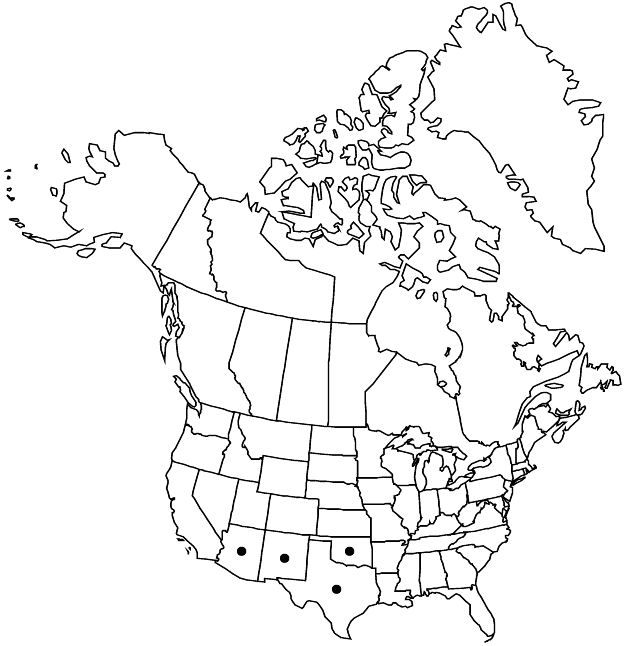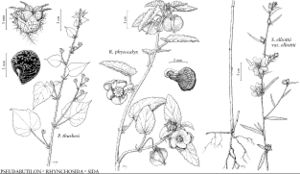Rhynchosida physocalyx
Brittonia 30: 458. 1978.
Plants with large taproot. Stems with hairs scattered. Leaves: stipules 3–4 mm; petiole 1/2–3/4 as long as blade; blade 2–5 cm, apex obtuse to acute, surfaces coarsely hairy, hairs stellate abaxially, simple adaxially. Pedicels slender, 1–2 cm. Flowers: calyx green-membranous, lobes apiculate; petals yellow [red basally], 5–8 mm, subequal to calyx; staminal column 3–4 mm, glabrous. Schizocarps 8–9 mm diam.; mericarp blackish. Seeds 2 mm. 2n = 16.
Phenology: Flowering spring–late fall.
Habitat: Deciduous forests, shrublands, roadsides, fencerows, disturbed habitats, sometimes in pastures and lawns
Elevation: 0–1500 m
Distribution

Ariz., N.Mex., Okla., Tex., Mexico, South America (Argentina), South America (Bolivia), South America (Brazil), South America (Uruguay)
Discussion
While this distinctive species, with its Physalis-like inflated fruits, is thought to be native over a wide area and disjunct between southern South America and Mexico and the United States, it is most commonly found in disturbed habitats as are so many other herbaceous mallows.
Selected References
None.
